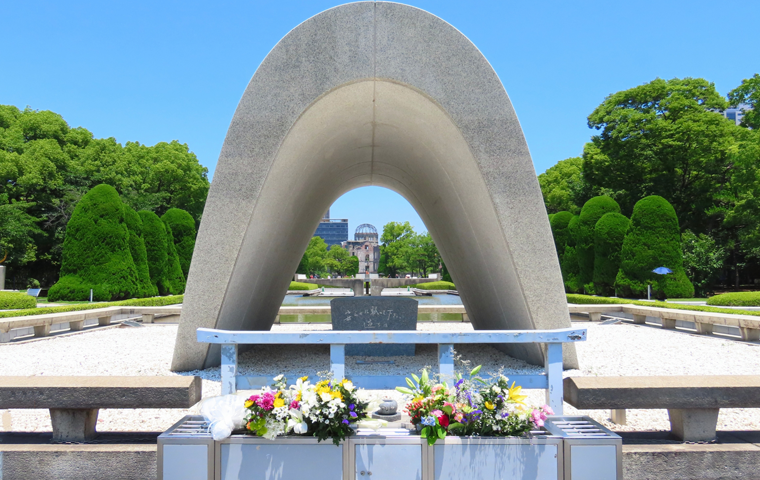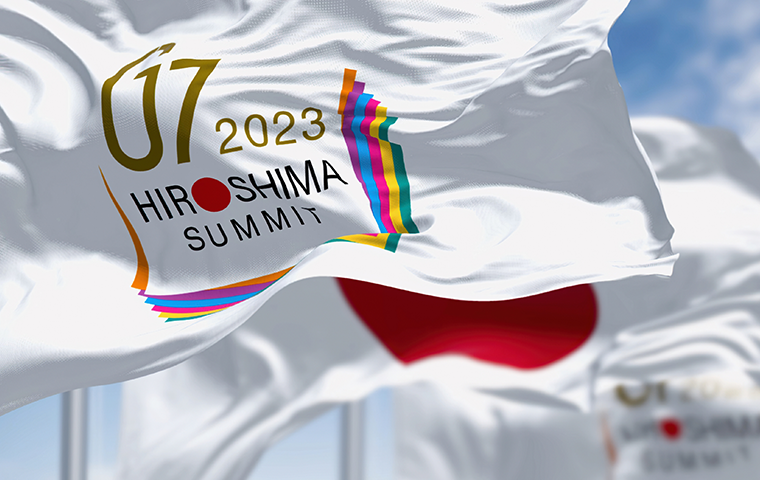Eighty Years After the War: Prayers for Iwo Jima
Related Articles
A Pilgrimage of Remembrance at the 80th Year Since the War

On April 7, 2025, Japan quietly embarked on a solemn journey of remembrance marking eighty years since the end of World War II. Their Majesties the Emperor and Empress chose as their first destination Iwo Jima, one of the fiercest and bloodiest battlefields of the Pacific War. That morning, the Imperial couple departed the Imperial Palace, boarded a government aircraft at Haneda Airport, and after a flight of about two and a half hours, landed on the isolated island approximately 1,200 kilometers south of Tokyo. This was their first-ever visit to Iwo Jima.
Upon arrival, Their Majesties visited three memorials, each reflecting a different aspect of the island’s tragedy. The first stop was the Monument to the War Dead on Iwo Jima (also known as the Ten’yama Memorial), erected by the Japanese government. There, they bowed deeply and laid flowers in honor of the approximately 21,900 Japanese soldiers who died defending the island.
Next, they paid respects at the Iwo Jima Civilian Peace Memorial Cemetery Park, which enshrines 82 former island residents who perished after being caught in the fighting as civilian employees of the military. Here, the Emperor and Empress reflected quietly on the reality that war robs not only soldiers of their lives but also civilians of their homes and peace.
Finally, they prayed at Hill of Repose, a memorial built by the Tokyo Metropolitan Government to honor all the fallen—Japanese and American alike—without distinction. The site stands above the underground command bunker once used by the Japanese garrison, symbolizing reconciliation and shared mourning for every life lost to war.
One of the most poignant moments of the visit was the act of offering water (kensui). Because Iwo Jima, a volcanic island, has no rivers, Japanese soldiers suffered unbearable thirst in the stifling underground tunnels before dying. The single cup of water offered by Their Majesties was not a mere formality—it was a gesture of deep empathy, a prayer to soothe the thirst of those who suffered so grievously. After the ceremonies, the Emperor and Empress spent time speaking tenderly with bereaved families and descendants of former islanders. When the Emperor softly told one attendee, “You endured great hardship,” it underscored that this was not a ceremonial duty but an act of genuine compassion and shared humanity.
The Island of Tragedy: Wounds of War That Still Remain
The decision to make Iwo Jima the first destination of the postwar 80th-anniversary memorial journey reflects a sobering truth: the island is not merely a historic site but a place where the scars of war remain raw. Over 36 days of combat between February and March 1945, nearly 30,000 lives were lost—about 21,900 Japanese soldiers and 6,800 American troops.
Yet the tragedy of Iwo Jima did not end eighty years ago. Most painfully, the remains of over 11,300 Japanese soldiers are still buried on the island, never returned to their homeland—more than half of all those who fell there. Although the Ministry of Health, Labour and Welfare continues recovery operations, the task grows more difficult with each passing year. The entire island remains, in effect, a vast cemetery—a stark reminder that for Japan, the war has not yet entirely ended. The Emperor’s visit was therefore not only an act of mourning but also a quiet reaffirmation of Japan’s unfinished national duty to bring every fallen soul home.
The visit also shed light on another, often forgotten tragedy. Before the war, Iwo Jima was home to a peaceful community of around 1,100 islanders. As the conflict escalated, they were forced to evacuate, and 82 men who remained behind as military employees were killed in the fighting. To much of the world, Iwo Jima is symbolized by the iconic photograph of U.S. Marines raising the flag on Mount Suribachi—a story told from a military lens. But by praying at the Civilian Peace Memorial Cemetery, Their Majesties reminded the world that war also devastates civilian lives, homes, and communities. It was a powerful message: remembrance must include not only soldiers but all victims, recognizing every human loss with equal dignity.
From Heisei to Reiwa: The Legacy of Peace Continues
The Emperor’s visit to Iwo Jima stands firmly in the tradition of remembrance established by his parents, the Emperor Emeritus and Empress Emerita, who initiated the “Journeys of Consolation” during the Heisei era. In 1995, on the 50th anniversary of the war’s end, the then-Emperor visited Okinawa, Hiroshima, Nagasaki, and Tokyo, honoring the victims of war and reaffirming the value of peace. These journeys later extended beyond Japan’s borders—to Palau, the Philippines, and other battlefields—where the Emperor Emeritus prayed for all the fallen, regardless of nationality, leaving a profound impression both at home and abroad.
Iwo Jima was also among these sacred sites. The Emperor Emeritus and Empress visited the island in 1994, 31 years before the current Emperor’s pilgrimage. That precedent gave special significance to the 2025 visit—it was not a new gesture, but the continuation of a mission passed from father to son, expressing the Imperial Family’s enduring commitment to peace.
Yet this latest visit was more than a repetition—it fulfilled an unrealized wish left from the previous generation. During the 1994 trip, the then-Emperor and Empress were unable, due to time constraints, to leave their vehicle when offering prayers toward the Civilian Peace Memorial Cemetery. This had long been described as a lingering regret. Thirty-one years later, the current Emperor and Empress visited the site in person, praying carefully and at length. It was a deeply symbolic act—proof that the Imperial Family’s remembrance is not static ritual, but a living tradition, evolving and deepening with each generation.
From Mourning to Memory: A Pledge of Peace for Future Generations

The visit to Iwo Jima at the 80-year milestone not only carried forward the Heisei-era tradition of remembrance but also embodied a new mission for the Reiwa era—a shift from “consolation” to “the inheritance of memory.” As the generation that directly experienced war rapidly fades, Japan faces an urgent question: how to preserve and transmit the memory of that tragedy to future generations.
The Emperor’s awareness of this challenge is evident in his own words. At his birthday press conference in February 2025, he referred to the Battle of Iwo Jima, stressing that “it is vital that the tragic experiences and history continue to be conveyed.” Later that year, in his August 15 speech at the National Memorial Service for the War Dead, he added a new line: “We must continue to pass down the hardships of the war and postwar years.” This statement marked a clear declaration that, as a postwar-born Emperor, he sees his mission not merely in mourning the dead but in ensuring the continuation of memory.
This spirit of inheritance was also symbolized when Princess Aiko, the Imperial couple’s daughter, accompanied them on later visits to Okinawa and Nagasaki. Her presence among survivors and storytellers represented the passing of memory across generations—a visible embodiment of remembrance taking root in Japan’s future.
Unlike political leaders, the Emperor—bound by Japan’s constitution to remain above politics—can approach the legacy of war solely from a humanitarian standpoint, offering empathy and reflection without ideological divide. By personally leading this new “journey of memory,” the Emperor fulfills one of the most vital roles of the modern symbolic monarchy: to unite the nation in a shared prayer for peace that transcends politics.
The Reiwa “Journey of Remembrance,” beginning on Iwo Jima, is thus not only a pilgrimage to mourn the past but also a pledge to safeguard peace for the future—a relay of collective memory carried by the Japanese people from generation to generation.



